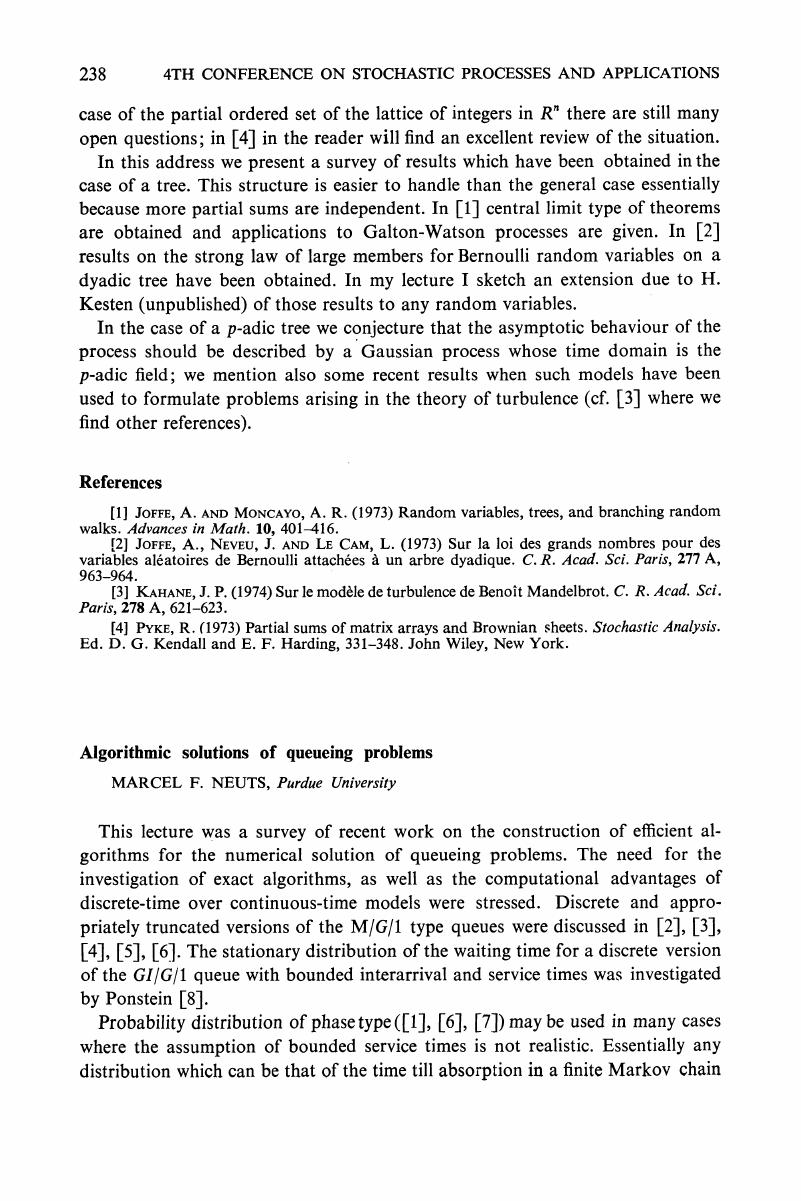No CrossRef data available.
Article contents
Algorithmic solutions of queueing problems
Published online by Cambridge University Press: 01 July 2016
Abstract
An abstract is not available for this content so a preview has been provided. Please use the Get access link above for information on how to access this content.

- Type
- I. Invited Review and Research Papers
- Information
- Copyright
- Copyright © Applied Probability Trust 1975
References
[1]
Cox, D. R. (1955) A use of complex probabilities in the theory of stochastic processes
Proc. Camb. Phil. Soc.
51, 313–319.Google Scholar
[2]
Heimann, D. and Neuts, M. F. (1973) The single server queue in discrete time – numerical analysis IV. Nav. Res. Log. Quart.
20, 753–766.Google Scholar
[3]
Klimko, E. M. and Neuts, M. F. (1973) The single server queue in discrete time-numerical analysis II. Nav. Res. Log. Quart.
20, 305–319.Google Scholar
[4]
Neuts, M. F. (1973) The single server queue in discrete time-numerical analysis I. Nav. Res. Log. Quart.
20, 297–304.Google Scholar
[5]
Neuts, M. F. and Klimko, E. M. (1973) The single server queue in discrete time-numerical analysis III. Nav. Res. Log. Quart.
20, 557–567.Google Scholar
[6]
Neuts, M. F. (1974) Computational uses of the method of phases in the theory of queues. Computers and Mathematics with Applications.
To appear.Google Scholar
[7]
Neuts, M. F. (1974) Probabilitity distributions of phase type.
Purdue Mimeo Series No. 374, Department of Statistics.Google Scholar
[8]
Ponstein, J. (1974) Theory and numerical solution of a discrete queueing problem. Statistica Neerlandica
20, 139–152.CrossRefGoogle Scholar
[9]
Rossa, G. (1971) Die Analyse von empirisch verteilten Zufallsgrössen auf dem Analogrechner
Zastos. Mat.
12, 135–151.Google Scholar


